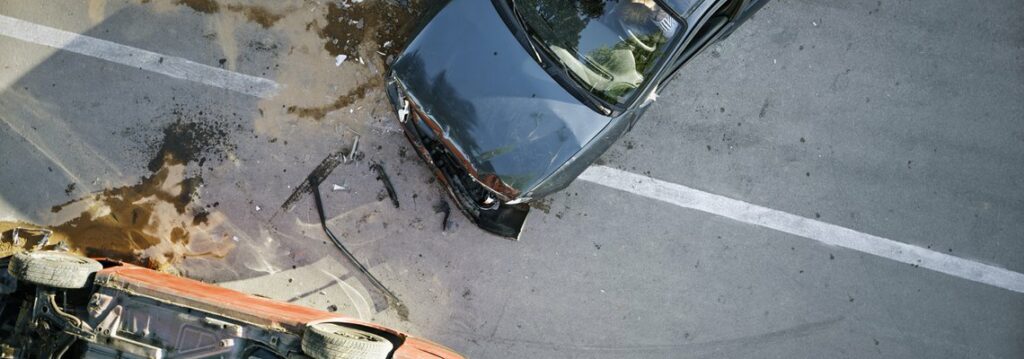Intersection accidents are a large part of the automobile collisions occurring on our roadways, according to the National Highway Traffic Safety Administration. Of those collisions, a significant percentage involve left-turning drivers. When it comes to left-turn auto accidents, determining the responsibility for the collision can be somewhat complicated. The law generally favors the straight-traveling driver, but there are instances in which those traveling straight may share part of the blame. Every case is unique and must be considered carefully before presenting a claim or filing a lawsuit. The law as it applies to these accidents and different factual scenarios are discussed below.
The Left Turn Law in California
Generally, the California Vehicle Code (CVC) places the burden on the left-turning driver to make sure the maneuver is started and finished in a safe manner. However, the straight-traveling driver also has an obligation to make sure they are paying attention at all times and do nothing to cause an accident once a left turn is commenced safely. Insurers and defense attorneys often try to shift at least some of the blame for these accidents so it is important to understand the statutory law in California.
CVC Section 21801 sets forth the general rule as it relates to making a left turn, and it reads as follows:
“(a) The driver of a vehicle intending to turn to the left or to complete a U-turn upon a highway, or to turn left into public or private property, or an alley, shall yield the right-of-way to all vehicles approaching from the opposite direction which are close enough to constitute a hazard at any time during the turning movement, and shall continue to yield the right-of-way to the approaching vehicles until the left turn or U-turn can be made with reasonable safety.
(b) A driver having yielded as prescribed in subdivision (a), and having given a signal when and as required by this code, may turn left or complete a U-turn, and the drivers of vehicles approaching the intersection or the entrance to the property or alley from the opposite direction shall yield the right-of-way to the turning vehicle.”
In short, the driver of the turning car or truck must make sure they commence their turn only when it is reasonably safe to do so, and they must yield the right of way to oncoming vehicles whenever the approaching vehicle might constitute a hazard. However, once the turning driver is safely into their turn those drivers approaching must then yield the right-of-way, and cannot carelessly collide with the other vehicle. Everyone behind the wheel of a car or truck has a legal obligation to operate their vehicle in a reasonably safe manner at all times.
Practical Analysis of the Left-Turn Accident and Fault
When it comes to left turn accidents, there are generally two things to analyze in determining fault. First, the law above must be considered, and then the reconstruction of the accident. As far as reconstruction is concerned, if someone starts a left turn when the approaching driver has no time to react, then the left-turning driver will be found entirely at fault. However, where the approaching driver has enough time (more than a couple of seconds) to see the turning driver and react to the danger, then the straight-traveling driver may share some of the blame. The reconstruction of the accident requires taking into account the speed and distance traveled by both vehicles.
For example, if a turning driver has traveled 20 feet from their stopped position at an average speed of 5 miles per hour, then it took them about 2.6 seconds to make the turn up to the point of impact. That is perhaps enough time for an attentive driver to see and react to the danger by braking or braking and swerving to avoid the collision. The longer it takes for the turning driver to reach the point of impact the more responsibility there may be for the approaching driver. This assumes, however, there are no obstructions or other impediments preventing the approaching driver from seeing that turn, from beginning to impact. The farthest distance at which they could see the turn and their own speed play an important role.
Unfortunately, left-turn accidents usually involve high impact collisions. It is not uncommon for a turning driver to misjudge the distance and speed of an approaching vehicle resulting in a serious collision, one in which the approaching vehicle was traveling at or near the speed limit. Lives can be changed forever in just matter of a few seconds. When you or a loved one is injured in an intersection or left-turn accident, contacting a personal injury lawyer can be an important first step toward recovery and getting your life back on track.
Contact an Orange Injury Attorney for a Free Consultation
Experienced injury attorneys deal with auto accidents like this on a regular basis. Mr. Ralph has 30 years of experience at handling left-turn accident cases on behalf of his injured clients. With his office being located in central Orange County and near 3 freeways, he has the opportunity to help those injured in auto accidents all over Orange County and Southern California. Contact his office now for a free consultation at the phone number above or by email.Tags: orange injury attorney, left turn collisions, left turn accidents, injury attorney, auto accident atotrney

